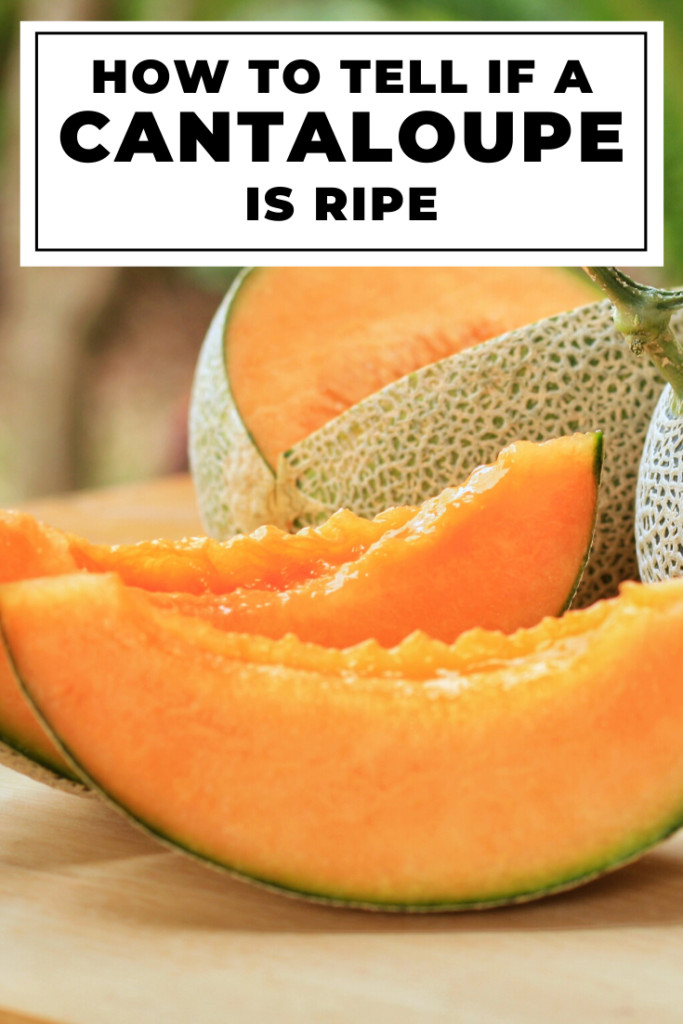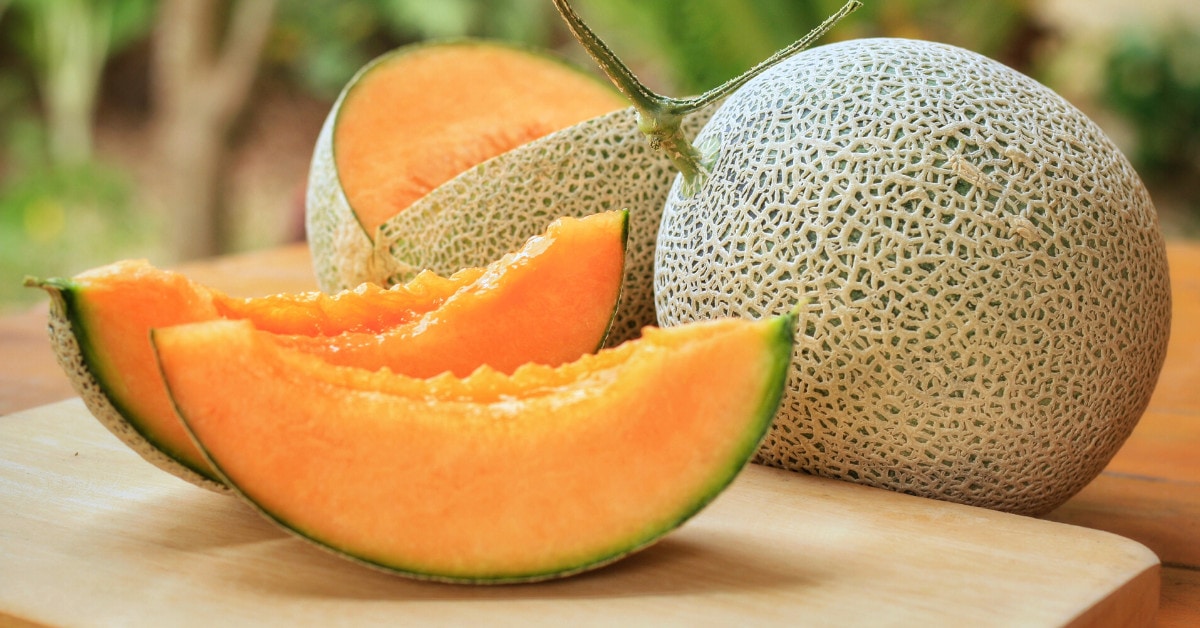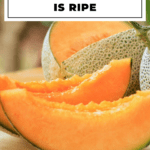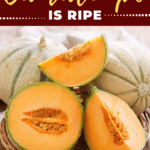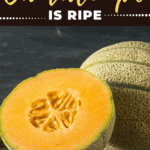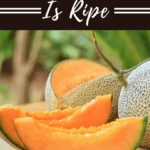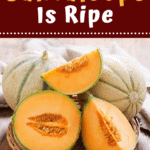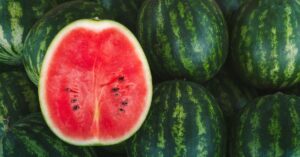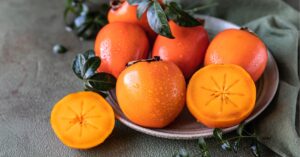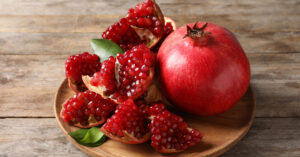They’re great in fruit salads or on a charcuterie board with salty ham. But do you know how to tell if a cantaloupe is ripe?
If you don’t, you run the risk of grabbing a hard, bitter melon. And nobody wants that!
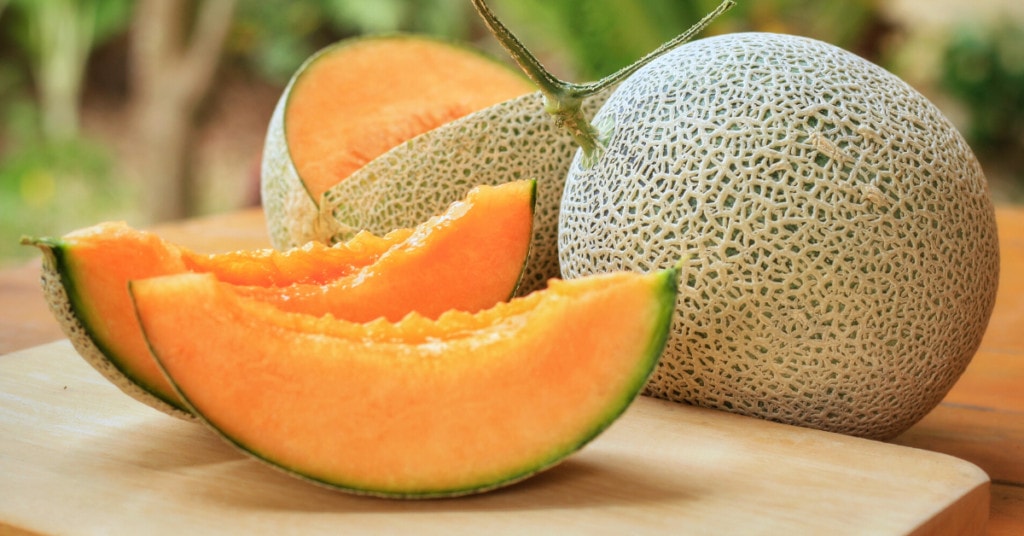
The sunny cantaloupe is delicious and packed with a ton of nutrients, including vitamins A and C.
And since it is 90% water, it’s also very low in calories.
When ripe, the flesh is soft with a slight bite, and it’s wonderfully sweet and juicy. That makes it ideal for sweet and even melon cocktails!
But when it’s unripe, it’s bland, bitter, and tough. That’s why it’s important to learn how to tell if a cantaloupe is ripe.
So let’s do just that!
Together, we’ll find out how to select the perfect cantaloupe, how to tell when it’s ripe, and how to properly store cantaloupe for maximum shelf life.
How to Choose the Best Cantaloupe
Got a couple of cantaloupe recipes you’re dying to try? Then you need the best melon for the job.
Here’s what you need to check for:
Bruises and Discoloration. A healthy cantaloupe does not have black or brown patches on it. But do not fret if you see one round and whitish discoloration on the rind, though. That’s just where it rested on the ground as it was growing. It’s completely normal and will not affect the flavor of your cantaloupe at all.
Fruit Flies and Insects. If you see these pesky little creatures hovering around the cantaloupe, that’s a sign of decay, so you better stay away from it.
Shape. Healthy cantaloupes have a perfect oblong or round shape. Avoid cantaloupes that are not symmetrical, or have dents and punctures on them.
Weight. You want the cantaloupes to be heavy for their size. If they feel hollow or too light, they’re no good.
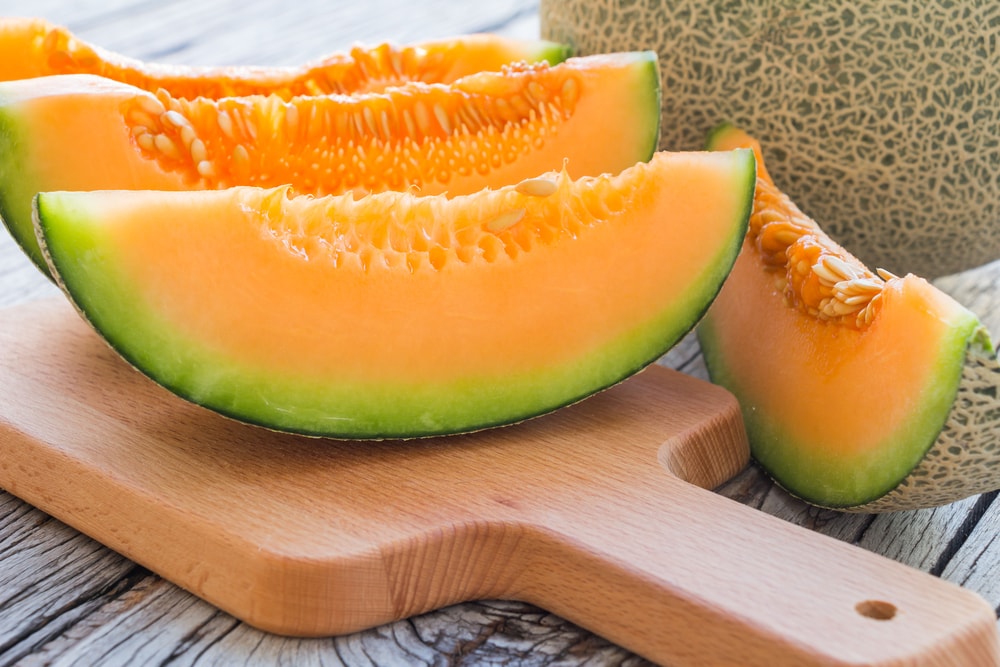
How to Tell If a Cantaloupe Is Ripe?
There’s nothing worse than a disappointing cantaloupe. When you expect sweet and juicy flesh, but it’s not ready to eat yet.
Avoid frustration and disappointment by checking your cantaloupe for ripeness. Here’s how:
The Look
A ripe cantaloupe should have a beige webbing pattern. That netting should look like raised ridges.
And underneath, the cantaloupe should either be cream-colored, sandy gold, yellow, or tan. If the rind is still green or grey, it’s not ripe enough.
The Stem
A ripe cantaloupe will detach from its stem on its own, so it should have a clean depression where its stem used to be connected.
So, when checking for ripeness, you’ll want to see a smooth round bottom with just a slight indent.
Don’t go for cantaloupes with protruding stem remnants, because that means they’ve been harvested way too early.
The Sound
Give the cantaloupe a little knock and you should hear a low, deep sound. If it gives off a high and hollow sound, don’t get it.
The Feel
The cantaloupe should have just the right level of firmness – not soft, but not too tough either.
Press down on the stem end – it should have just a bit of give. If it’s too tough, it needs a few more days to ripen, but if it’s too soft, it’s past its prime.
Give the fruit a good shake, too. If you feel the seeds are rattling around in there, that means the cantaloupe is ripe. Don’t get it if you don’t feel any movement at all.
The Smell
Give the blossom end (the opposite of the stem end) a whiff. If it’s ripe, it should have a sweet, musky, and floral aroma.
A faint or no smell at all indicates that it isn’t ready for eating yet.
Now, if the scent is too strong, or if it resembles that of an alcohol or acetone, that means the cantaloupe is overripe and already fermenting.
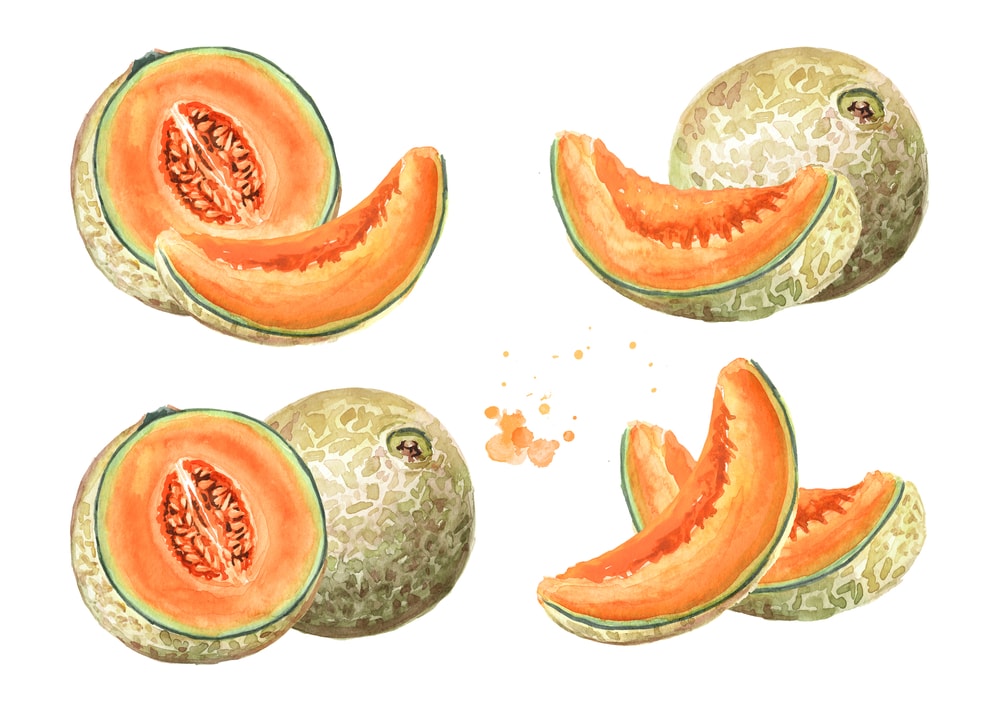
How to Store a Cantaloupe
Unripe Cantaloupes
Once they’re harvested, cantaloupes do not ripen further.
If you’ve purchased an unripe cantaloupe by accident, leave it at room temperature for a few days. Or store it in a paper bag to help it mature faster.
This won’t change its flavor (sorry), but it will at least soften the flesh.
Whole Cantaloupes
Whole, uncut cantaloupes will last for up to five days when stored at room temperature.
But, if you want to preserve them much longer, better store them in the fridge. This will keep the cantaloupes fresh for over a week.
When storing your cantaloupe in the fridge, keep the temperature between 36 to 40 degrees. The crisper drawer is the best place for this.
Sliced Cantaloupes
Wrap the rest of the fruit in plastic wrap and refrigerate.
For cantaloupe slices, place them in an airtight container before you refrigerate. This is important because cantaloupes will easily absorb the taste and odor of other items in your fridge.
Also, do not scrape off the seeds yet because they help retain the cantaloupe’s moisture. Consume sliced cantaloupes within two days, or else they will dry up in the fridge.
Do not eat cantaloupe slices that have been sitting out on the counter for over two hours! They’re no good and unsafe, so just throw them out.
By the way, here’s a gentle reminder when handling cantaloupes: give it a thorough rinse. Sure, you won’t eat the rind, but the knife will come in contact with the flesh as you cut it.
The rind may contain harmful bacteria such as Listeria and Salmonella, and I’m sure you don’t want to ingest any of that stuff.
So wash the cantaloupe under running water. Give it a good scrub with your fingers or a hard brush. Don’t use soap, though, as it may seep through the rind and into the fruit.
Oh and only rinse the cantaloupe right before you slice into it. Do not wash it in advance, as this will add moisture to the rind, and will promote mold growth.
